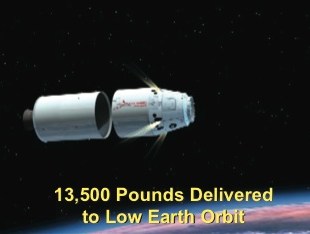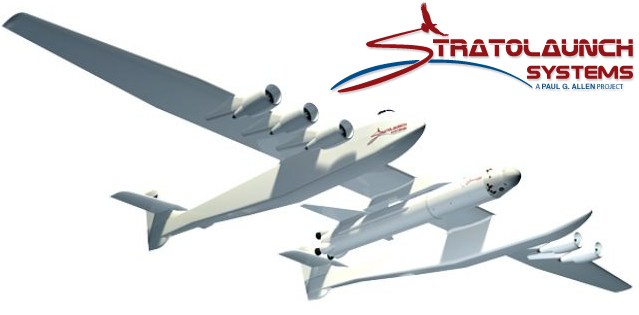Having conquered the terrestrial realm, today’s big money is looking to the skies for new regions to subjugate. And what was a lark ten years ago now appears to be a common hobby among a certain ambitious type of mogul not given to the habit of collecting megayachts. Their millions have produced results, however, and while the shuttles have been retiring, the private space ships have been making flight after flight.
Paul Allen and Burt Rutan worked together on the original SpaceShipOne, part of a challenge to build a reliable extra-atmospheric aircraft. The design has been refined and (to an extent) commercialized by Virgin Galactic, but Allen and Rutan want to make an entirely new aircraft. And they’re not modest about their ambition: Stratolaunch Systems, their new venture, aims to create the largest aircraft ever flown. How’s that for a mission statement?
The idea is to minimize the cost of launching materials and eventually people into space. The problem with the space shuttles, and nearly every other form of space-directed travel, is that they rely on rocket boosters to launch them straight up from the ground. When you think about it, it’s a bit primitive, isn’t it?
 The solution is to get the payload into the air first, give it some speed, and then boost it with the rockets to escape velocity. The SpaceShip series of spacecraft does this, riding underneath a WhiteKnight and then detaching, boosting, and escaping. Stratolaunch hopes to improve the WhiteKnight method, allowing for larger items and potentially spacecraft to be launched into orbit.
The solution is to get the payload into the air first, give it some speed, and then boost it with the rockets to escape velocity. The SpaceShip series of spacecraft does this, riding underneath a WhiteKnight and then detaching, boosting, and escaping. Stratolaunch hopes to improve the WhiteKnight method, allowing for larger items and potentially spacecraft to be launched into orbit.
Powered by six 747 engines, with a wingspan of 380 feet, and requiring a runway more than two miles long, this would in fact be the largest aircraft ever to take flight – yes, wider than the Spruce Goose, though slightly lighter than the An-225. The rocket booster/orbital payload (built by Elon Musk’s Space Exploration Technologies) is mounted centrally, and the pilots, fuel and passengers would be put in two pontoon-like cargo areas, each the size of a jumbo jet’s. It would take off in the traditional way, fly until it reached a suitable speed and position, then boost itself the orbital payload into orbit. (Update: The entire aircraft does not go into orbit, only to high altitude, where it navigates to the position from which it can launch the payload; this paragraph and the previous have been altered to reflect this)
News of the new partnership and company has been bubbling under the surface for a while, but this is the first public announcement regarding the joint venture. Money was not mentioned, possibly because the sums involved are simply to high and too complex to break down — but to produce a spacecraft from scratch isn’t exactly a minor endeavor. They are likely looking at hundreds of millions in R&D, facilities, and manufacturing. But considering the first few hundred tickets on Virgin Galactic sold out at a price of $200,000 each, it’s probably considered a smart early-stage investment in a growing industry. They plan to start test flights in 2016.
